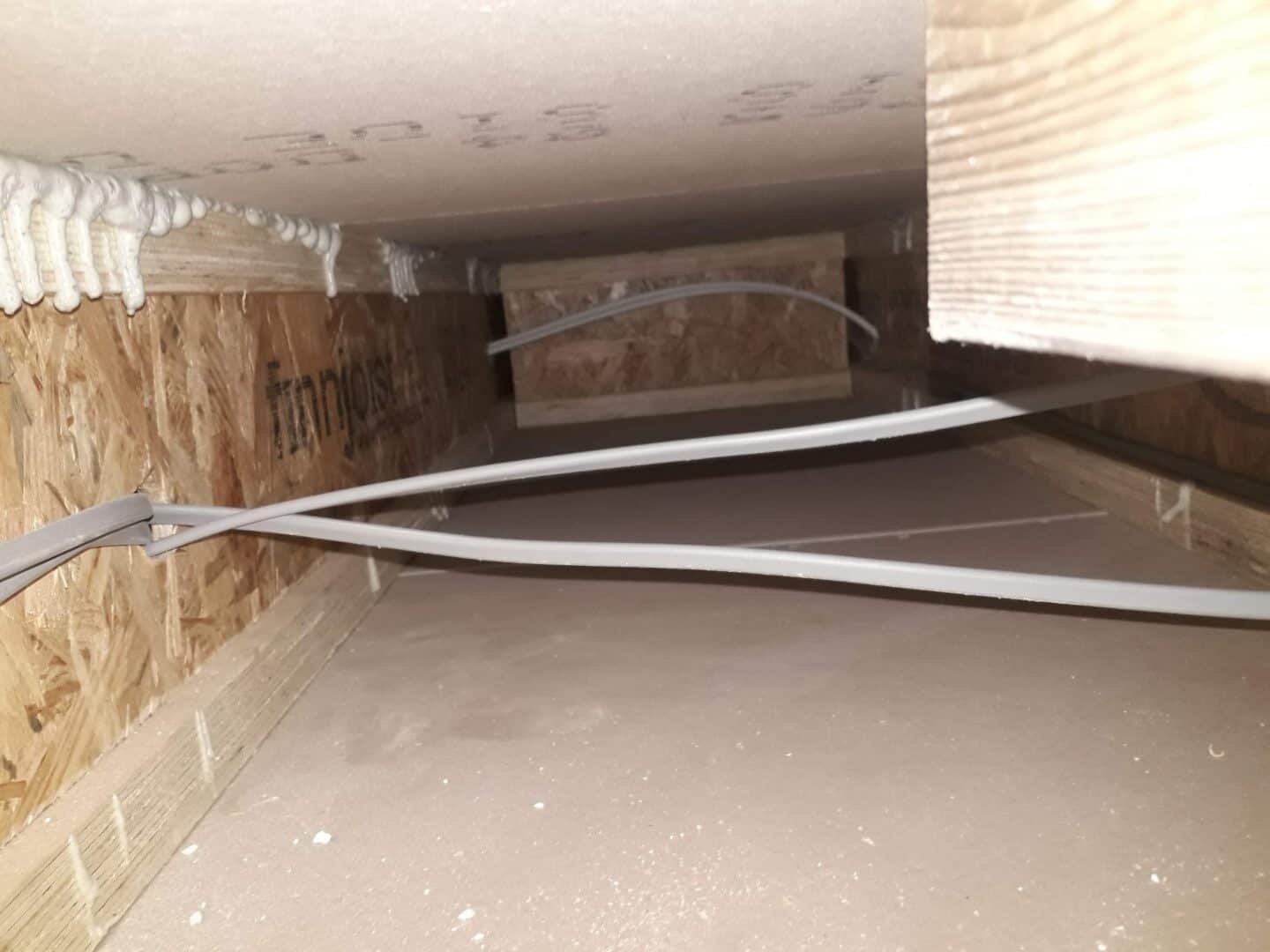Imagine this: you’re embarking on a home renovation project, eager to upgrade your plumbing system for greater efficiency and reliability. PEX piping, with its flexibility and affordability, seems like the perfect solution. But you hit a snag – your existing floor joists are in the way. Can you safely and effectively run PEX through these structural elements? This article delves into the details, offering a comprehensive guide to help you navigate this common plumbing dilemma.

Image: homeminimalisite.com
Running PEX through floor joists is a frequent question in DIY renovations, especially when working with older homes or undergoing significant plumbing upgrades. PEX’s flexibility and cost-effectiveness make it a popular choice, but routing it correctly is key for long-term performance and safety. Understanding the regulations, best practices, and potential challenges will ensure a successful and reliable plumbing system for years to come.
Understanding PEX Piping: What Makes It Unique?
PEX, or cross-linked polyethylene, is a relatively new material revolutionizing plumbing. Unlike traditional copper or PVC pipes, PEX offers several key advantages:
- Flexibility: PEX is highly flexible, making it easy to maneuver around obstacles and through tight spaces. This is particularly beneficial when running through floor joists.
- Corrosion Resistance: PEX is impervious to corrosion, unlike copper pipes that can corrode over time, leading to leaks and damage.
- Cost-Effectiveness: PEX is generally less expensive than copper, making it a more budget-friendly option for large-scale plumbing projects.
- Easy Installation: PEX is designed for simple installation, often using crimp rings or expansion fittings, making it DIY friendly for skilled homeowners.
Navigating the Rules: PEX and Building Codes
Before starting any plumbing project, understanding local building codes and regulations is crucial. These codes typically address various aspects, including:
- Minimum Pipe Size: Codes usually specify minimum pipe diameters to ensure adequate water pressure and flow.
- Pipe Installation Methods: Codes may dictate allowed installation methods, like running PEX through floor joists, ensuring safety and structural integrity.
- Water Pressure Ratings: Pipes must be rated for the intended water pressure within the plumbing system to prevent leaks or failures.
Running PEX Through Floor Joists: A Detailed Guide
When running PEX through floor joists, following certain practices ensures a safe and compliant installation:
1. Consult a Licensed Plumber: While DIY plumbing is possible for some projects, running PEX through floor joists is best handled by a licensed plumber. They possess the expertise to ensure proper installation and adherence to building codes.
2. Select the Right PEX Type: There are different types of PEX, each with specific properties and applications:
- PEX-A (Type A): Expanded rigid PEX, known for its excellent durability and resistance to high temperatures.
- PEX-B (Type B): An extruded PEX with good flexibility and resistance to freeze-thaw cycles.
- PEX-C (Type C): Cross-linked PEX, often used for hot and cold water systems, known for its flexibility and affordability.
3. Determine the Installation Method: There are two primary methods for running PEX through floor joists:
- Stapling: This method involves securing PEX to the sides of the joists using U-shaped staples. It’s generally suitable for smaller pipe diameters and shorter runs.
- Clamping: This method uses PEX clamps, typically made of stainless steel, to secure the pipe to the joist. Clamps provide a more robust and secure connection, particularly for larger pipe diameters and longer runs.
4. Consider Joist Size and Spacing: The size and spacing of the floor joists will influence how PEX can be routed. It’s essential to leave enough space between the pipe and the joist to prevent interference with structural integrity.
5. Secure and Support PEX: To prevent sagging or shifting, support PEX with clips or brackets at regular intervals, especially for longer runs.
6. Protect PEX from Damage: Floor joists are exposed to potential damage from foot traffic, furniture, and other factors. Consider wrapping PEX in protective sleeves or coverings to prevent abrasions or punctures.
7. Utilize Expansion Fittings (if necessary): For longer runs or sharp bends, consider using expansion fittings to prevent stress on the PEX pipe.

Image: www.proconstructionguide.com
Avoiding Common Mistakes: PEX Installation Tips
Here are a few key mistakes to avoid when running PEX through floor joists:
- Over-tightening Clamps: Ensure you’re using the right type of clamps and tightening them to the appropriate torque. Over-tightening can damage the PEX or compromise its flexibility.
- Using Incorrect Fittings: Using incompatible fittings can lead to leaks or failures in the future. Choose fittings specifically designed for the PEX type you’re using.
- Ignoring Fire Safety: PEX is generally fire-resistant, but it’s crucial to avoid running it near heat sources, like furnaces or water heaters.
Expert Insights and Actionable Tips
Here’s what industry experts recommend:
- Always prioritize professional installation, especially when dealing with plumbing, especially when running PEX through floor joists.
- If DIYing, familiarize yourself with local building codes and requirements for PEX installation.
- Consider consulting a licensed plumber for advice and guidance in complex plumbing projects.
Can You Run Pex Through Floor Joists
Final Thoughts: A Well-Planned Plumbing System
Running PEX through floor joists can be a cost-effective and efficient option for plumbing upgrades. However, careful planning and execution are essential to ensure safety, code compliance, and long-term performance. Remember, consulting with a qualified plumber and following best practices will ensure a seamless and reliable plumbing system for your home.






